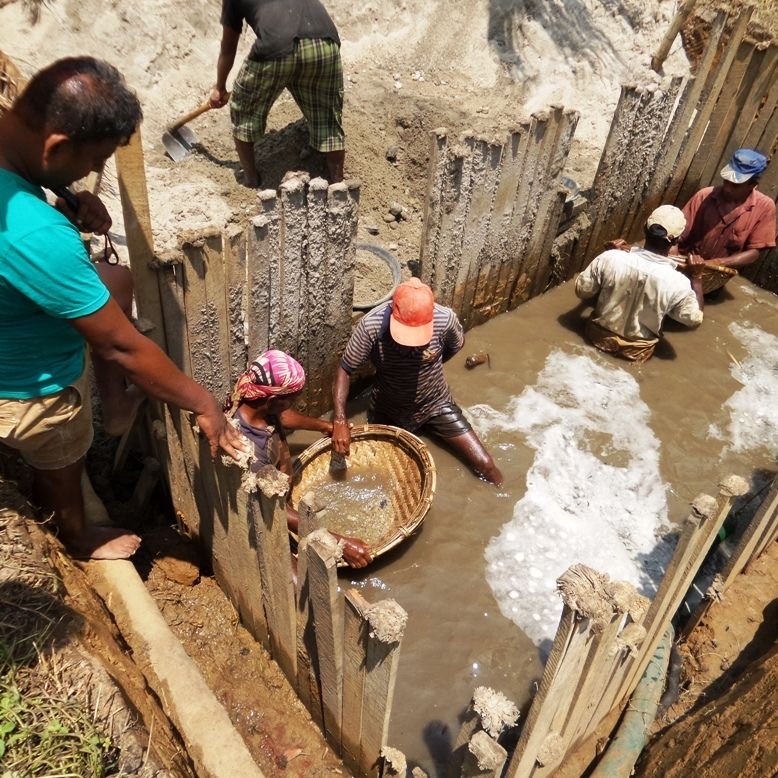Artisanal mining, steeped in historical legacy, has re-emerged as a prominent livelihood source for many communities. However, its impact on local societies and the environment is far-reaching, giving rise to pressing concerns. Artisanal mining, typically defined by small-scale operations, constitutes a lifeline for numerous communities residing in resource-endowed regions.
These communities depend on mining as a foundational source of income because they frequently lack viable alternatives. However, the lack of formal institutions places miners in hazardous situations with poor safety measures and limited access to essential services, creating a depressing cycle of poverty that is challenging to end and increasing vulnerability.

The impact of artisanal mining on the natural environment creates an intriguing conundrum. These activities, which use primitive methods, result in unrestrained soil erosion and water body contamination. The use of toxic compounds like mercury and cyanide for gold extraction leads to an increase in water source contaminants, which has a negative effect on aquatic life and puts the health of individuals who depend on these ecologies in danger. This ecological puzzle is further complicated by deforestation, which also results in biodiversity loss and disturbs ecosystems, and the destruction of habitats for mining areas.
Additionally significant are the socio-cultural tremors that artisanal mining has caused. Surge in population numbers puts a strain on local infrastructure as miners congregate in resource-rich areas. Internecine conflicts, both those that arise inside the mining community and those that do between these groups and nearby people, can result from the competition for limited resources. Additionally, the influx of mobile labor increases the frequency of crime, including illegal activities like human trafficking and the trading in illicit goods.
Cognisant of the myriad challenges tethered to artisanal mining, coordinated efforts have been marshalled to instate regulation and formality within this domain. Governments and non-governmental entities are collaboratively implementing policies that advocate conscientious mining methodologies, underpinning miner safety and counteracting environmental degradation. The promotion of safer extraction methods and training endeavours stands to ameliorate the detrimental aspects linked with artisanal mining practices.
The complexity of artisanal mining is becoming increasingly easier to navigate because to technological improvements. For instance, blockchain technology is being investigated as a tool to add transparency and traceability to supply chains. This technology has the potential to stop the criminal trade in conflict minerals and spread ethical mining practices. Additionally, the advancements achieved in data analytics and remote sensing make it easier to find unlawful mining operations and the monitoring of shifts in land utilisation, furnishing regulatory authorities with enhanced enforcement mechanisms.

Empowering local communities is the foundation of effective artisanal mining regulation. The solution to breaking the cycle of poverty and reducing dependency on mining lies in including these people in decision-making processes, ensuring their access to education and healthcare, and disseminating information about alternative economic options. Promoting the establishment of ethical mining cooperatives helps ensure that community members are fairly distributed the economic benefits.
It is impossible to deny the appeal of artisanal mining as a source of revenue for resource-rich communities. However, the negative effects on regional societies and the environment must not be disregarded. In order to moderate these negative effects, mining methods must move in the direction of regulation, formality, and ethical mining. Artisanal mining and the communities it supports both beckon a peaceful and sustainable future when the delicate balance between economic advancement, environmental preservation, and societal well-being is achieved.
Sources
- https://en.m.wikipedia.org/wiki/Artisanal_mining#:~:text=An%20artisanal%20miner%20or%20small,own%20resources%2C%20usually%20by%20hand.
- https://www.ft.com/cobalt1
- https://www.ncbi.nlm.nih.gov/pmc/articles/PMC6014108/#:~:text=Air%20pollution%2C%20water%20pollution%20and,%26%20Van%20der%20Vorst%202002).
- https://www.scirp.org/journal/paperinformation.aspx?paperid=82628
- https://journals.sagepub.com/doi/10.1177/20503121221076934?icid=int.sj-full-text.similar-articles.2




